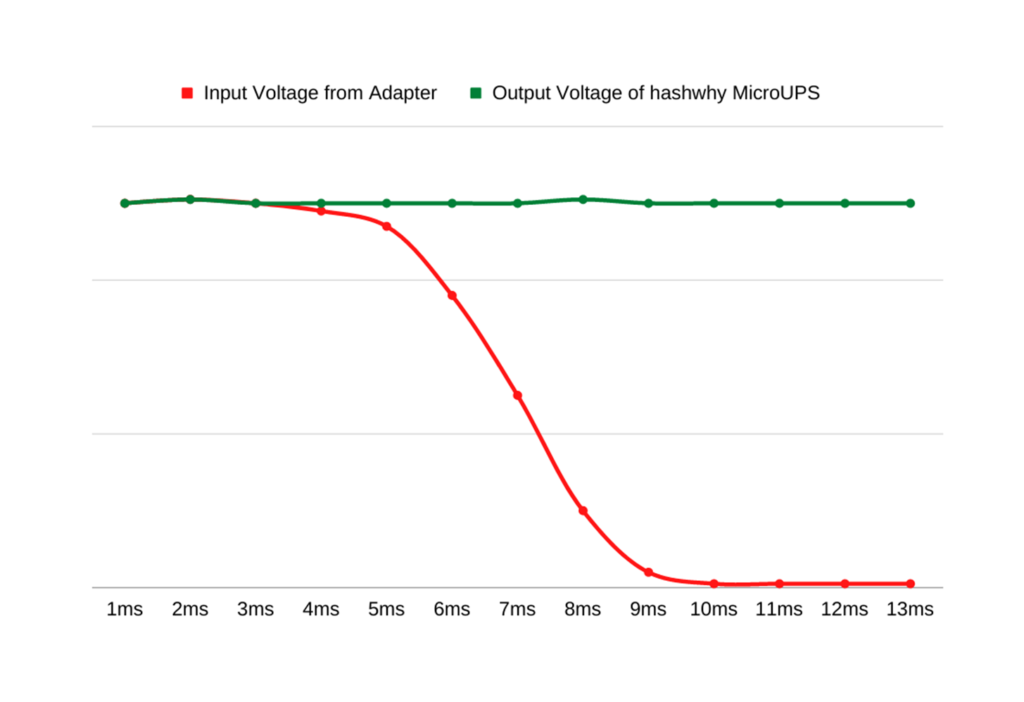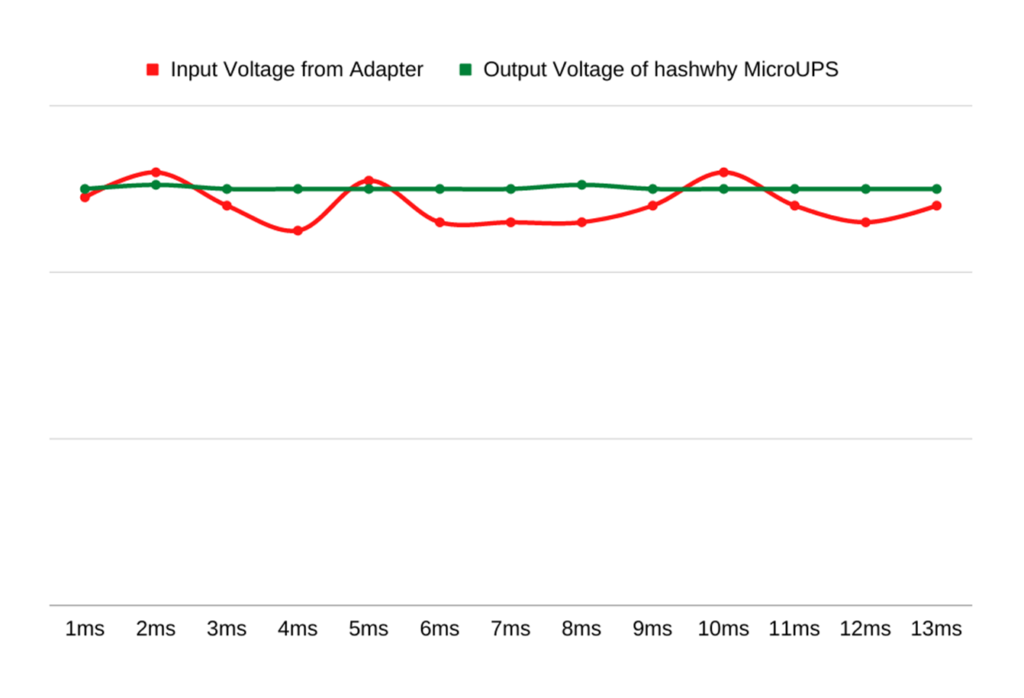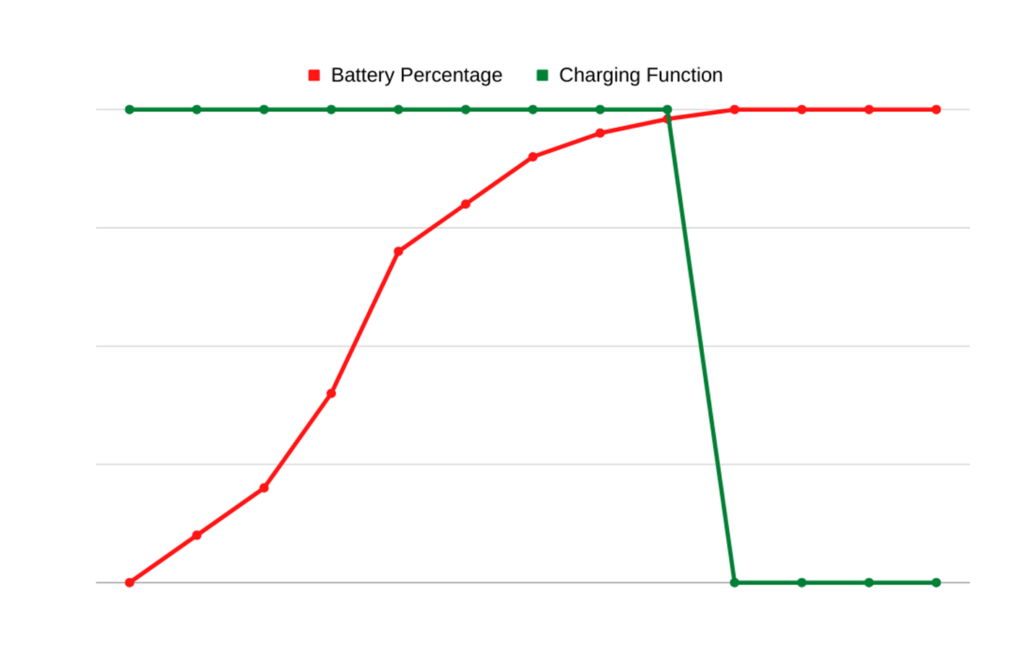What are the special features of hashwhy MicroUPS series ?
hashwhy is a brand of RegalDream Technologies. RegalDream technologies launched its first product of 5V 2A MicroUPS series in June 2020. The product was well received by customers. As the first product, it had its flaws as it wasn’t designed to work well with all devices and under all circumstances, because we didn’t anticipate the users using them for those purposes. When the range of devices that the MicroUPS was used to power increased, it enlightened us with a set of new features that would improve the performance of MicroUPS series a lot.
The hashwhy 12V 2A MicroUPS for routers and modems, and the hashwhy 5V 3A MicroUPS for Google Mesh Routers, Raspberry Pi and other 5V IoT devices and boards, incorporated a lot of those improvements and features which we believed, was necessary for better compatibility and functioning.
Adaptive Cable Compensation
Problem: The first generation of MicroUPS was run on 5V only and was designed to work well with 5V 2A devices, which were located 1-2m away from the MicroUPS. The DC voltages drop a lot when cheaper cables are used and also when the cable length increased. When the users connected a very long cable from adapter to MicroUPS, this resulted in low voltage to the devices connected to the MicroUPS.
How we solved it: hashwhy MicroUPS is equipped with adaptive cable compensation, which means that the device, even if it receives a slightly low voltage, converts the voltage to a stable level, 5V or 12V, depending on the device. This enabled the device to accommodate longer cable lengths as well us improve its performance when a lower quality cable is used.

Zero Lag Switch Over
Problem: The first generation of MicroUPS had a 3-4ms switch over delay and there were visible voltage dips and spikes in the first generation of MicroUPS. This, on most occasions, didn’t create any problems to the devices connected. But, nonetheless, improving performance of your device is always how the company strives for a better product.
How did we improve: The new hashwhy MicroUPS series has almost no visible spikes on switching over from battery to the main supply, or from main supply to the battery. The switch over delay was improved to < 1ms, to be far superior in terms of performance.

Voltage Stabilisation
Problem: The first generation of MicroUPS didn’t have a function of voltage stabilisation. It only functioned as a UPS, as most ones in the market does. If the adapter had some stability issues with the voltages, the first generation MicroUPS didn’t make the voltage stable. This meant that, unstable adapters caused issues with the devices connected.
How did we improve: New generation MicroUPS series was introduced with Voltage Stabilisation techniques. This meant that the MicroUPS actively compensates for any voltage drops from the adapter, thereby ensuring a better voltage output to the connected device. Since the device gets a stable supply voltage, the performance and the life of the device could be projected to be better in the long run.

Smart Charging
Smart charging ensures that the charging of the batteries of the MicroUPS is cut off when it is full. MicroUPS series incorporates this feature. The IC inside the MicroUPS can sense the battery voltage. It has a built-in charge profile algorithm and programmed charging rate for the lithium ion battery packs connected to them. This ensures that the product charges only when required. The charging happens in parallel to powering the device. Unlike some Mini DC UPS which needs to charge initially to power on, hashwhy MicroUPS can power your devices from the moment you turn it on. It doesn’t have to be charged separately or even touched, once you install the device. It can charge by itself when the power is back on, and also stop charging when the battery is full. No human intervention or care is required for the device.

These features and improvements happened because we worked closely with our customers from 2020. The customers were happy to share their feedbacks and contact us for support, stating their issues, which has helped us improve. We would like to thank our customers, for helping us improve. It didn’t happen because we could design, it happened because they showed us the path. This article is dedicated to their sincere efforts to help us grow.